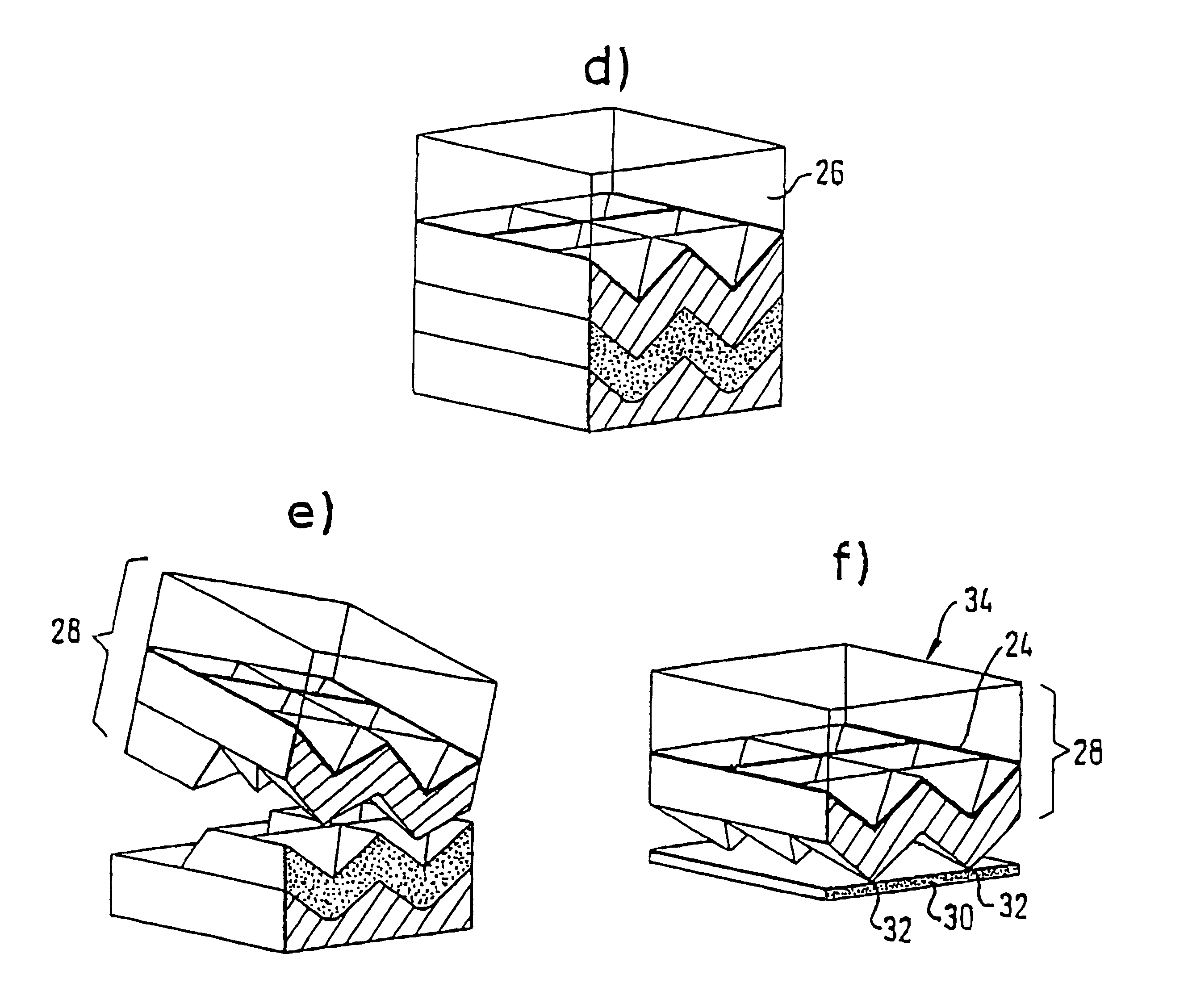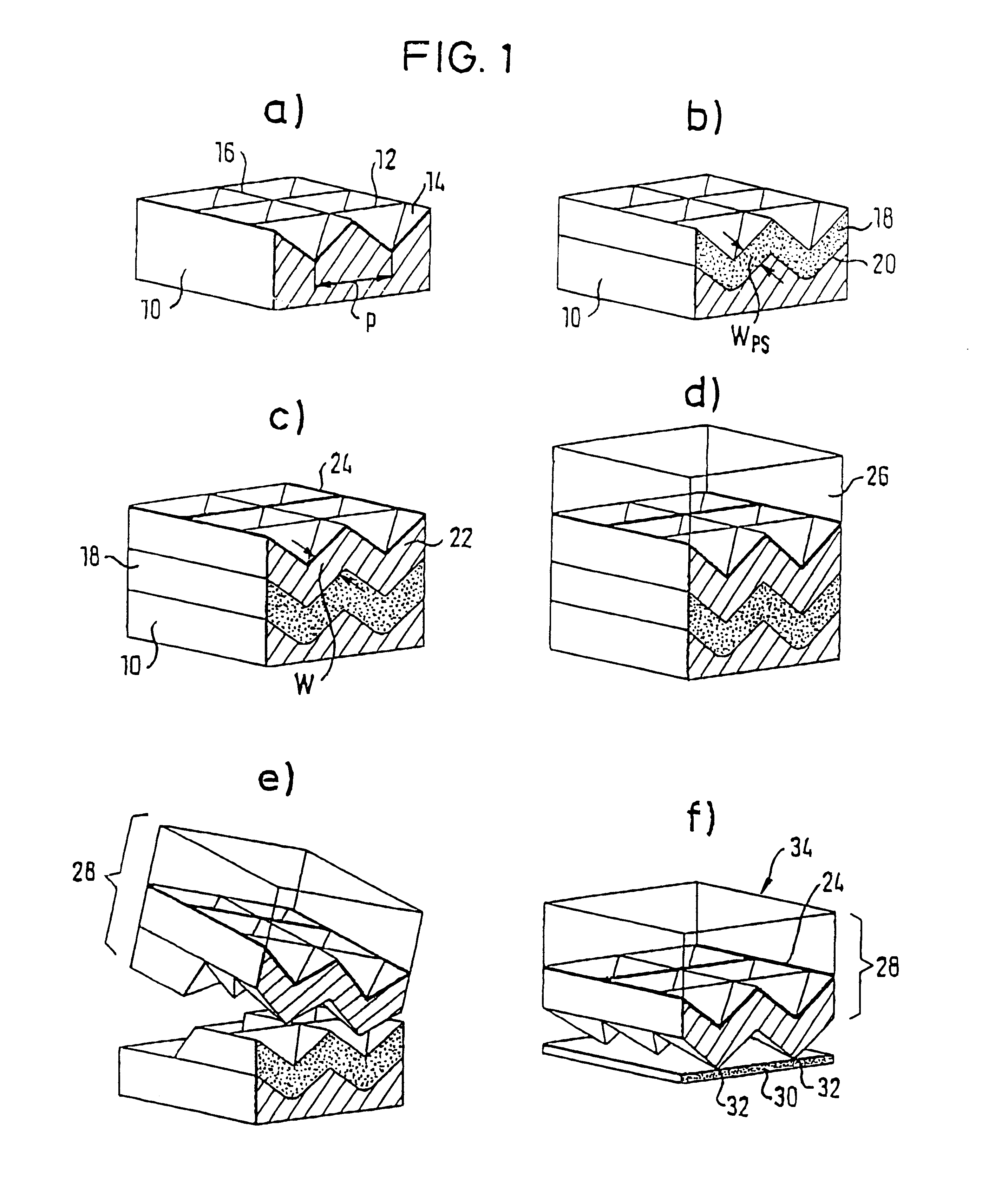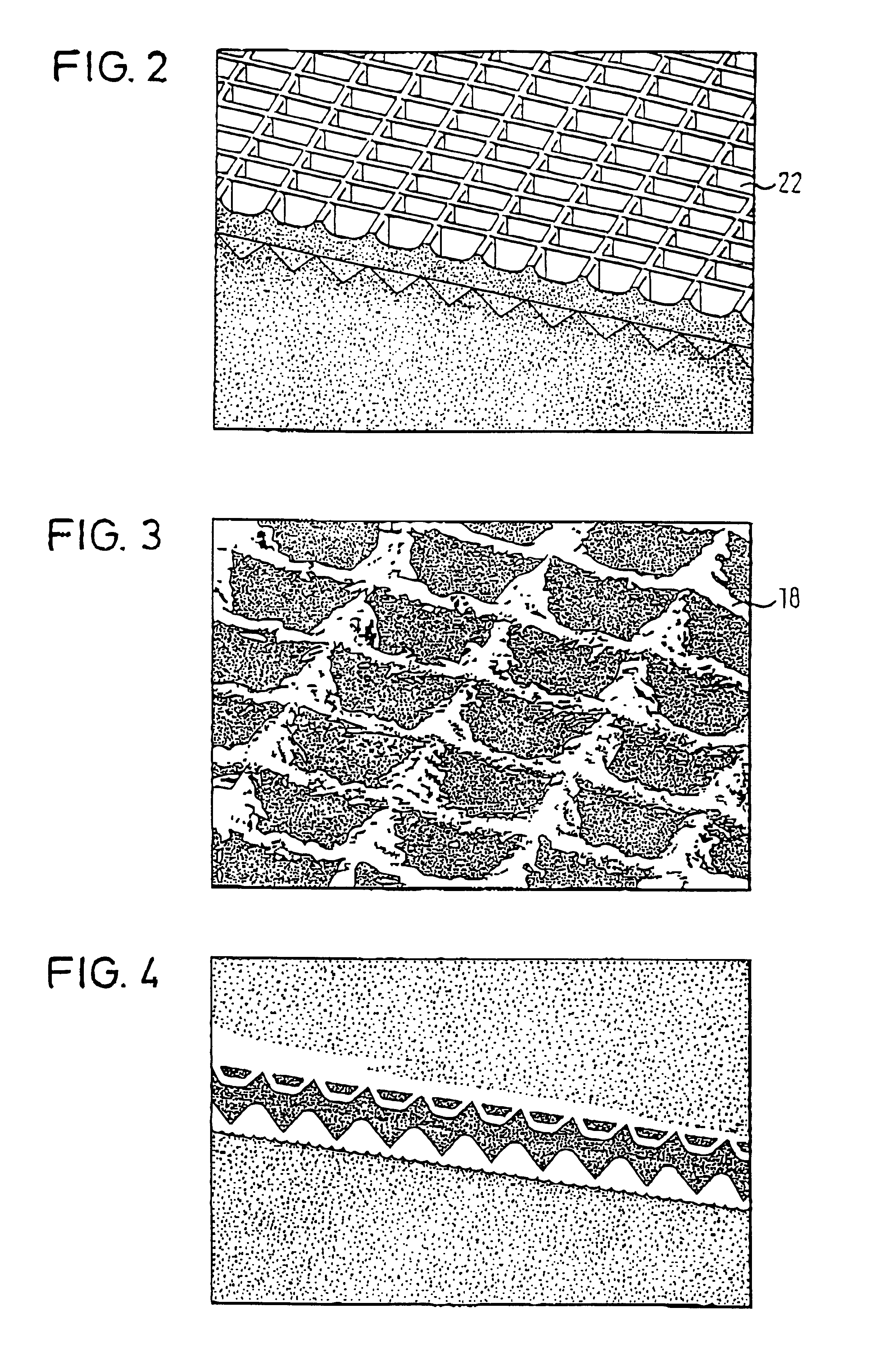Method for producing layered structures on a substrate, substrate and semiconductor components produced according to said method
a technology of layered structure and substrate, which is applied in the direction of sustainable manufacturing/processing, crystal growth process, final product manufacturing, etc., can solve the problems of increasing the danger of undesired separation, the method is relatively complicated, and the method is more complicated
- Summary
- Abstract
- Description
- Claims
- Application Information
AI Technical Summary
Benefits of technology
Problems solved by technology
Method used
Image
Examples
Embodiment Construction
FIG. 1A shows a silicon substrate 10, for example of p-Si, with an n-Si substrate likewise entering into question. The one surface of the Si substrate 10 has a structuring 12 which one can consider as a matrix of pyramidal recesses 14, the base surfaces of which are placed directly alongside one another, so that the upper boundary of the surface is very similar to a square grid.
The substrate 10 is subsequently treated in manner known per se in order to produce a porous silicon layer 18 (FIG. 1B). The upper side of the porous silicon layer 18 has the same shape as the structured surface of the Si substrate 10. The boundary surface between the porous silicon layer 18 and the substrate has the same shape.
The substrate 10 is now coated by means of an epitaxial method. In this manner a layer 22 of epitaxial silicon first arises on the surface of the porous layer 18. In principle, any of the known epitaxial methods can be used for the formation of this layer 22, i.e. amongst other things ...
PUM
| Property | Measurement | Unit |
|---|---|---|
| porosity | aaaaa | aaaaa |
| porosity | aaaaa | aaaaa |
| porosity | aaaaa | aaaaa |
Abstract
Description
Claims
Application Information
 Login to View More
Login to View More - R&D
- Intellectual Property
- Life Sciences
- Materials
- Tech Scout
- Unparalleled Data Quality
- Higher Quality Content
- 60% Fewer Hallucinations
Browse by: Latest US Patents, China's latest patents, Technical Efficacy Thesaurus, Application Domain, Technology Topic, Popular Technical Reports.
© 2025 PatSnap. All rights reserved.Legal|Privacy policy|Modern Slavery Act Transparency Statement|Sitemap|About US| Contact US: help@patsnap.com



